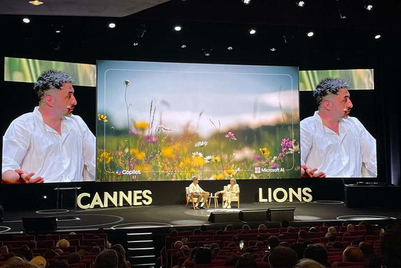
See all coverage of the 2015 Media360 Summit
Data is an integral part of marketing, yet it is still often treated as a mystical art. “Stand up if you work with data every day,” said Adam Anger, regional GM of Microsoft Advertising, moderating. About half the room got up. But it was a trick question. His point was media is as much about data as it is content. Everybody, he said, should be on their feet.
The question he wanted to address most was how to put strategies in place to truly capitalise on the power of data. “A lot of brands don’t even know how much data they are sitting on,” he said.
“There is a fantasy out there,” agreed Rahul Vasudev, MediaMath’s managing director for Asia Pacific, “that unless you are an Amazon, or a Walmat or a massive CPG company, then you don’t have the data.” But that’s not true. Just one CRM exposure or ad-serving tag in a digital campaign, he explained, could have 20 different data points.
“Data is everywhere,” said Bret Leece, chief analytics officer at Initiative Global. From any mobile-based campaign, he advised, there’s likely more data than the average IT team could even handle. “The key thing is to know what data you need,” as well as what to do with it. And he advocated that learning how to slice and dice data is what brands should worry about rather than where to get data.
Anger also asked how companies can use data to go beyond hindsight. Proving ROI is among the most common uses for data, so he asked for ways companies could be more forward thinking.
TripAdvisor, a travel website, has more than 70 million reviews and opinions on its site, assessing over 4 million businesses. That’s a huge amount of content but it’s also all data. Martin Verdon-Roe, the company’s VP of global display sales, said all that information helps his firm “learn what the real customer journey is” when it comes to booking a plane ticket or hotel reservation.
“The travel cycle is quite long, he said, “People visit lots of different types of websites.” But most attribution models don’t take in the full scope of where people go and what information might have the most influence. Most advertisers, he said, can’t see enough of the journey. And he gave an example that exposure to ads during travel planning could drive up subsequent search terms from consumers 500 per cent for a given brand.
Leece also pointed out how weather data can be useful in deciding what kind of product to advertise. He outlined a case where a car company promoted a sporty vehicle on sunny days and more rugged ones against rain or snow.
“At some point,” Vasudev later cautioned, “you have to kick the data and analytics people out of the room and get creative.” Data can be a rabbit hole that’s easy to get lost in. Leece agreed, saying 80 per cent is sure enough to take action.
To close the session each speaker gave the crowd their own bit of advice for working with data in marketing and communications.
Verdon-Roe advised agencies to invest in research to help their clients better understand data resources. Anytime they can prove a theory with a case study, he said, that will go a long way to building confidence in the both the data strategy and the agencies’ ability to capitalise on it in terms of business performance.
Leece singled out a matter of price performance, saying everybody needs to look at how to spend less and get more. “That’s where our head should be at”, he stressed. Concluding, Vasudev advocated the key is to “be fearless. You have to put your feet in the water sometime. Start small.”
See all coverage of the 2015 Media360 Summit


.jpg&h=334&w=500&q=100&v=20250320&c=1)



.png&h=334&w=500&q=100&v=20250320&c=1)



.png&h=334&w=500&q=100&v=20250320&c=1)







.png&h=268&w=401&q=100&v=20250320&c=1)
